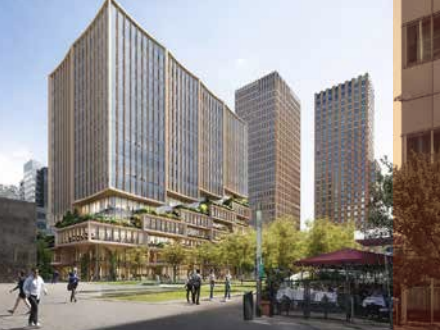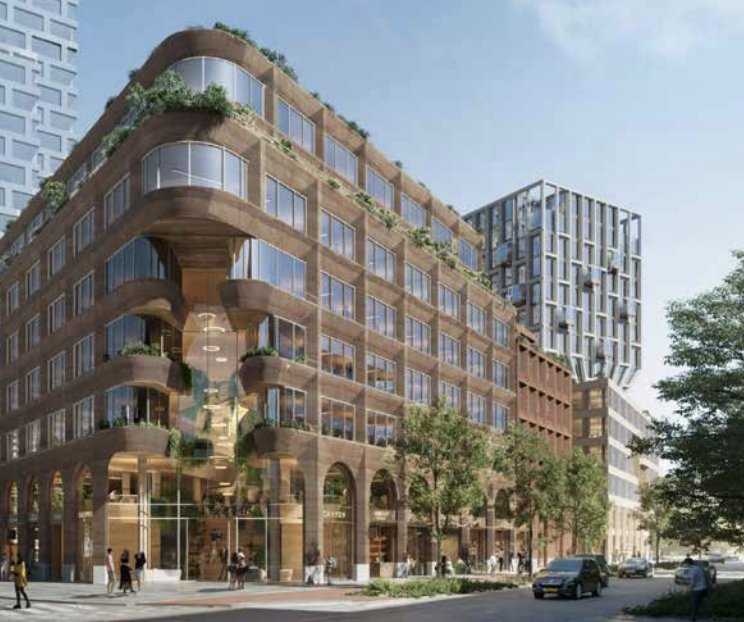ENLIVENING ZUIDAS AT EYE LEVEL
One of Amsterdam’s main business districts, Zuidas is gradually transforming into a true urban quarter and becoming home to a growing number of people. A vital piece of this transformation is creating conditions for a lively street scene – not only during the daytime, but in evenings and weekends, too. Perhaps surprisingly, the built environment has a key role to play.
Earlier this year, property developer Zadelhoff won the tender for a project called The Harmony in the new car-free neighbourhood of Ravel. On the ground floor, the building’s design emphasises flexibility, with modular spaces. This approach reflects a shifting conception of how buildings can contribute to the vibrancy of a neighbourhood. The interplay between structures and their environment is becoming increasingly important, says Jaap Brouwer, an urban designer with the municipality of Amsterdam.
Varied mix at street level
Restaurants, gyms and health services can be found all over Zuidas. Harder to find is a vibrant street scene, especially outside office hours. Urban planner Kirsten Plattje, also with the municipality of Amsterdam, says that a varied mix of amenities has a defining impact on the feel of a neighbourhood. “When developing new buildings”, she says, “it makes more sense to provide for multiple smaller spaces on the ground floor than for huge commercial units”. This keeps rents affordable and so creates opportunities for local merchants, such as florists and bakers.
Municipal influence
Though the municipality is not in the business of bricks and mortar, it plays a significant role in the development of municipal land through the public tenders it issues. Tenders are assessed on a range of criteria, including the development plans’ ground floor layouts and public accessibility. Municipal authorities may for example award more points to designs with smaller, more accessible spaces tthat help enliven the street.
Long versus short term
Over the long term, adding social and cultural functions to buildings can make a neighbourhood more appealing for a wider range of target groups. However, as Brouwer points out, because such functions often depend on subsidies, property owners tend to be less interested in these sorts of tenants than in big players such as supermarket chains and fitness clubs. And yet, over time, the payoffs of street level diversity are higher. According to Brouwer, “A building that is situated in a lively neighbourhood is more attractive”. Developers and property owners are starting to realise this and are now partnering with the municipality more often.

Private land developments
Good collaboration is essential for projects on private land. The redevelopment of the former ABN AMRO complex, now owned by Victory Group, is a case in point. The new owners have appointed a commercial real estate manager to coordinate base-level occupancy, and the first building to go up here, Mahler 1, will explicitly be integrated with its surroundings.
The challenge of existing real estate
Apart from new developments, the other major challenge is the street level space of existing buildings. Redevelopment and attracting new tenants usually offer good prospects to enliven a neighbourhood. Rising on the site of the former Circl pavilion on Gustav Mahlerplein, Mahler 1 will accommodate a variety of public functions geared towards the public space. WTC owner CBRE is meanwhile making plans to refurbish the publicly accessible atrium on Zuidplein. Brouwer explains: “The trick is to time developments so they will reinforce each other.” For example, Mahler 1 can become a place to congregate when it’s nice out, while the WTC atrium offers shelter in bad weather. Designing buildings as part of their surroundings rather than as isolated structures will help to make Zuidas a lively, thriving urban district.
